Combinatorial Space Trajectories
to Comets and Asteroids
Ingo Althöfer (Jena University)
Latest Update: March 05, 2019
In principle, the design of optimal space trajectories is a continuous
optimization problem. However, if the task involves several objects
(planets, asteroids, comets, space junk) it has also facets of
combinatorial optimization. When I learned about the "Global
Trajectory Optimization Competitions" in 2009, my old
and almost forgotten interest in space missions reawakened.
I looked for a creative colleague and programmer - and found him in
Dietmar Wolz.
New: In 80 Years through the Solar System
Dietmar Wolz designed a very interesting "Total Tour" through the solar system:
Starting at Earth with modest speed, making flybys at all planets (from Mercury
to Neptune) and having a smooth accounter with Pluto in the end. Most of the
energy is taken from gravity assists.
Entry in Dietmar's blog
Video: In 80 years through the solar system
Jena Missions to
Comet Churyumov-Gerasimenko
One of the "recent" highlights in space research was and is the
Rosetta mission by ESA. Started from earth in 2004, the
probe made high-speed flybys at two asteroids (Steins and
Lutetia), and in 2014 arrived at comet Churyumov-Gerasimenko.
We were motivated to find other interesting tours: also with
this comet as the final target, but before with slow flybys at
many main belt asteroids. By "slow" a relative speed of
5 km/s or less is meant. At this speed more data and photos
can be taken, and at this speed it is also possible to make
the flybys more narrow: for instance with minimum distance 1,000 km
instead of 2,500 km.
Using modified techniques from the GTOC-competitions and the
list of 16,000+ asteroids from GTOC-7, we constructed
several interesting low-thrust tours with computer help.
Here are some of them.
Double Probe Mission with 27 + 24 Flybys
A highlight is the following double mission: Two probes
start from earth and have the comet Churyumov-Gerasimenko
as their final destination. The first probe is intended to make
a highspeed crash into the comet. The other probe will arrive
two months later for a soft landing and possible investigation of the
impact place. During their trajectories, both probes will
make slow flybys (with delta-v below 5 km/s in most
cases) at many main belt asteroids. The "crash probe"
meets 24 asteroids, and her soft sister has even 27 encounters.
All the asteroids visited are different, so a total of 51 minor bodies
and the comet at the end are inspected.
Arrivals at the comet will be, when the comet is relatively
near to earth - and also in an active phase.
The probes start from earth in January 2022, and arrive
at the comet in 2035.
Video: The Jena double mission to comet "Chury" with 27+24 slow flybys
Comet Sample Return Mission with 19 + 23 Flybys
A single probe starts from earth and will go to comet
Churyumov-Gerasimenko. There it will land, collect samples
and brings them back to earth. Both in the first and
the second leg, the low-thrust probe will make slows flybys
at many mainbelt asteroids (again taken from the 16,000+
list of GTOC-7).
The probe starts from earth in December 2021, arrives
at the comet in 2035, and is back at earth in the year 2048.
Video: Jena return mission to comet "Chury" and back to Earth with 19 + 23 slow flybys
Flyby at Asteroid VishyAnand and Dust Collection at
Comet Churyumov-Gerasimenko
This mission is rather different from the previous ones. It is
relatively short: slightly longer than five years. Start from Earth
in 2025, narrow slow flyby at asteroid VishyAnand in 2026, narrow fast
flyby at comet Churyumov-Gerasimenko in 2028 (including the collection of
comet dust), return of the dust to Earth in April 2030.
Video: Jena mission with flyby at VishyAnand and dust return from comet Churyumov-Gerasimenko
Vishy Anand is (still today) one of the very strongest chess players
in the world. He was 6-fold World Champion (between 2001 and
2013) and the best Asian chess player so far.
The idea for this space tour came up, when the
international chess press reported that an asteroid
had gotten the name of Vishy Anand. By chance, he is
also interested in astronomy, including observation
"campaigns" with modern telescopes.
On demand more details of the mission can be given:
mass bounds, time tables, flyby and reentry speeds,
propulsion strategy ...
Perhaps India, a nation with high ambitions in space
reasearch and smart engineers (see the Indian mission to Mars
from 2014), might be interested to fly such a tour.
For this mission - as well as for the other missions mentioned
on this site - of course also later starting dates are possible.
Global Trajectory Optimization Competitions
In a Global Trajectory Optimization Competition
strong engineers and scientists from all over the
world try to solve a difficult and futuristic trajectory task
under realtime conditions. The task is published, and registered
teams have exactly 28 days to submit the best solutions they "find".
A second serious point is: It is not known ahead what the overall
optimal solution is - and how far other participants have come.
Even the team (the winner of the previous competition) who provides
the task typically does not know what is achievable.
During the competitions, more and more teams participated.
It started in GTOC-1 with 17 participants and grew to 38
at GTOC-7. One thing has to be seen: Not each registered team
will submit a solution. For instance, in GTOC-7, only 27 of the
38 teams submitted. Participants come from almost all nations
with engagement in space activities:
USA, Canada, Western Europe (national and international teams),
Russia, Japan, China. (And it is only a question of time that
also teams from India and Iran will compete.)
Three times, a team from the Jet Propulsion Laboratories
in Pasadena (California) won the competition. But also
West Europeans were successfull, and also a group from
Moscow State University.
Here we present space trajectories designed by my team at
Jena University and
Dietmar Wolz. Some are from the GTOC competitions. Others
are from tasks he worked on by his own interest.
In each case, we visualized and published the trajectories
in a Youtube video. Of course, in all these missions fuel was
limited and also the maximum duration of the mission.
Essential for the design of our trajectories are three algorithms
by Dario Izzo (Lambert solver), Nikolaus Hansen (CMA-ES),
and M.J.D. Powell (BOBYQA). We give some links for descriptions
and sources at the end of this site.
Our Best: 49+1 at GTOC-4
A list of about 1,300 near earth asteroids (with their
Kepler orbits) was given and a 15-year time window for the start
from earth.
The task was to design a low-thrust trajectory with
as many flybys as possible, including a soft final
landing on one of the asteroids. The whole tour had
to last no longer than 10 years from earth start to final
asteroid landing.
The problem statement in detail can be found
here: GTOC-4.
Winner of the GTOC-4 became a team from Moscow
State University, with 44+1 asteroids.
Video of the winning Moscow tour for GTOC-4
Video of the 45+1-"Johnson Tour, University of Texas at Austin" for GTOC-4
Video of the 46+1-"Jena Tour" for GTOC-4, found in 2015
Asteroid list of our 46+1 tour:
In September 2017, Dietmar Wolz was
able to compute a GTOC-4 tour with 47+1 asteroids.
Video of the 47+1-Tour for GTOC-4
In April 2018, Dietmar Wolz made another big step forward. He
computed - by sort of a miracle - a GTOC-4 tour with 49+1 asteroids.
Youtube movie of our 49+1-Tour for GTOC-4
More details of this tour on request. Send email to
gtoc4.ingo.althoefer@gtoc4.uni-jena.de
In doing so, delete all gtoc4. parts from the address.
Are there 50+1 tours around for the GTOC-4 problem?
GTOC-5
A list of about 7,000 asteroids was given and a
15-year time window for the start from earth.
The task was to design a trajectory where the probe
softlanded on asteroids and installed seismographs.
Later the probe shot a "heavy bullet" into such asteroids
(and the seismograph should record the impact).
For each soft landing the mission got 0.2 score points,
and for each heavy bullet another 0.8 points.
The task was to get as high a score as possible within
mission length 10 years or less.
The problem statement in detail can be found
here: GTOC-5.
The winning team (from JPL, Pasadena) achieved 18 points.
During the competition, we "found" a tour with 12 points.
Later - with improved techniques - Dietmar Wolz got another tour
with 17 points.
Video of our tour with score 17 for GTOC-5
GTOC-6
Planet Jupiter with her four main moons (Io, Europa,
Ganymede, Callisto; innermost mentioned first) was given.
For each moon, the surface was subdivided in 32 areas/faces; and
each face had some value between 1 and 3. A probe should
take photos of the faces, during a 4-year tour with multiple
gravity assists at the moons. The task was to maximise the total
score (324 being the theoretical upper bound).
The problem statement in detail can be found
here: GTOC-6.
The winning team (from Roma and Torino) achieved 311 points.
Our best solution - constructed in early 2015 - has 275 points.
Video of our 275-tour; view from above
Video of our 275-tour; view from the side
GTOC-7
A list of about 16,000 main belt asteroids was given.
The task was to design a trajectory for one mothership
and three smaller probes. Each probe would leave the mothership
to softland on as many as possible asteroids during a 6 year
span, then return to the mothership. Score was the total
number of asteroids visited.
The problem statement in detail can be found
here: GTOC-7.
During the competition, we found a solution with 24 points -
and were optimistic that these 24 points were a strong score.
But after evaluation it turned out that the JPL team had
achieved a 36-solution; so we had missed our target to
get at least 80 percent of the winner score. At least, the
24 points made us the best German scorer.
Rather quickly after the competition we found a 29-solution,
and even later one with 34 points.
Video: A Jena tour with score 29 for GTOC-7
Video: A strong Jena tour with score 34 for GTOC-7
Computing time was not for free. The power bill for Winter 2014/2015
showed more than 700 Euro extra, only for the trajectory computations.
In Summer 2018 we had a look at the first three editions of GTOC.
For each one, we produced a video for our best solutions so far.
Video of our best tour for GTOC-1
Video of our best tour for GTOC-2
Video of our best tour for GTOC-3
History: Pioneer 10
Through the Main Asteroid Belt
The sequence of planets is well known. Starting at the sun and going
outwards we have Mercury, Venus, Earth, Mars, Jupiter, ... Between
Mars and Jupiter, many smaller bodies "reside": the asteroids in their main belt.
For a long time it was not clear how densely this belt was filled with really "small"
pieces. In particular it was an open question if a probe from earth would have good
chances to survive a treck throught the main belt. It definitely has!
The first trecker was the US-probe Pioneer 10. It was launched in March 1972,
reached the inner shore of the belt in July 1972, had passed the belt
healthy in February 1973, and reached Jupiter successfully in December 1973.
The different steps of the Pioneer 10 and 11 tours were celebrated by
special postal letters. We are proud to own some of them:
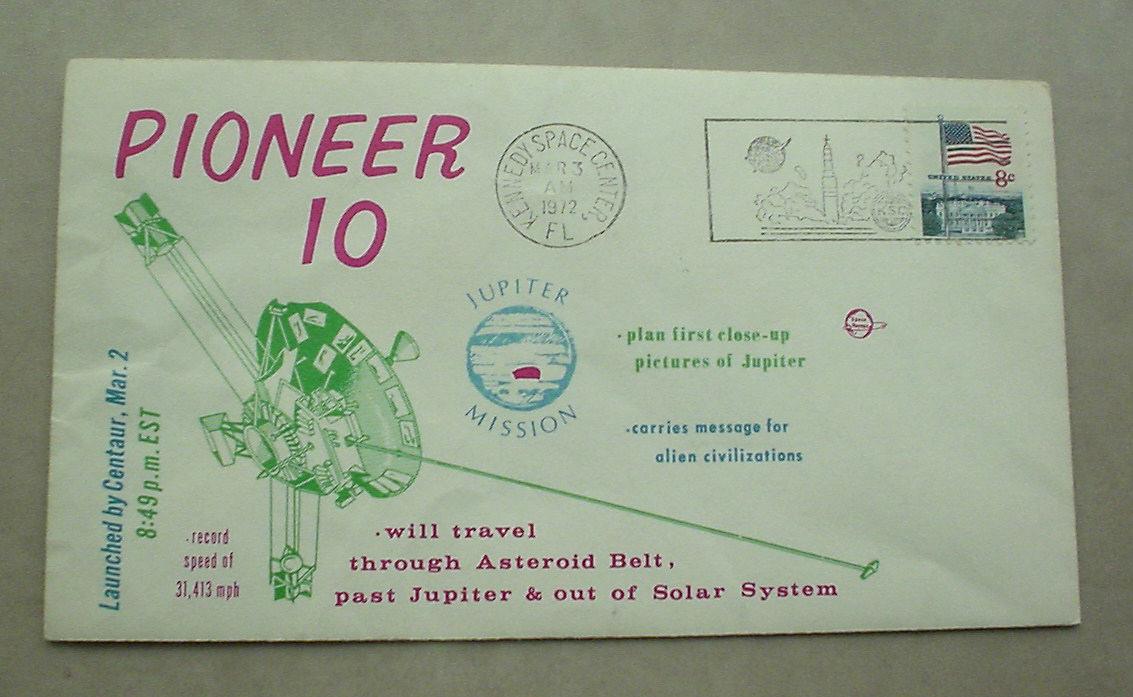
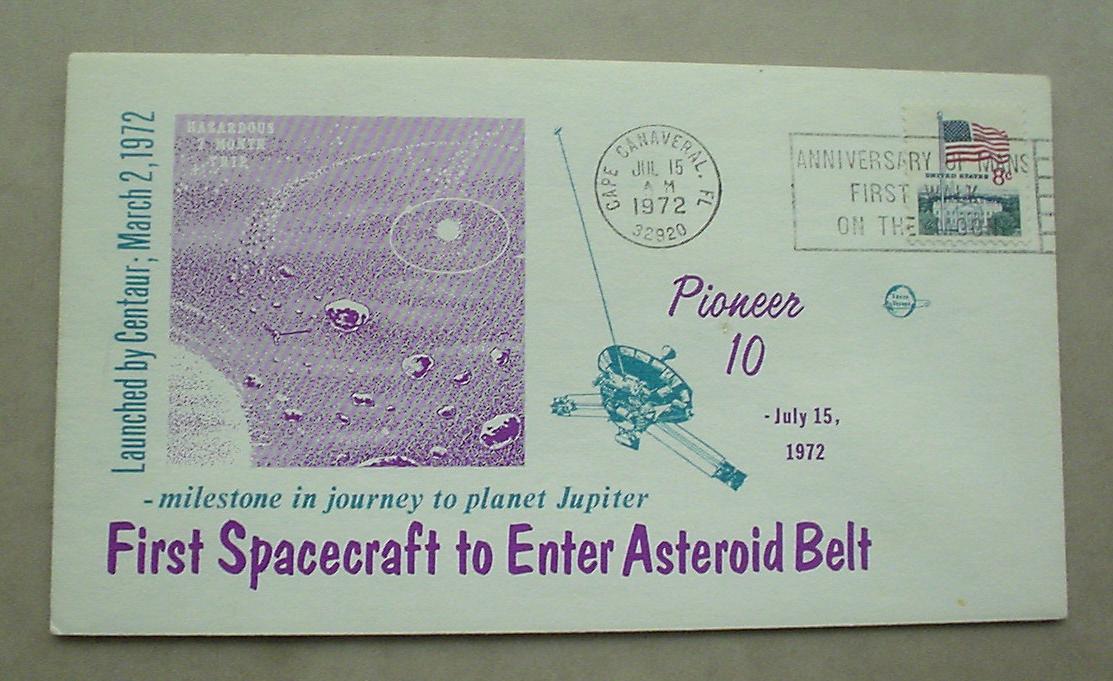
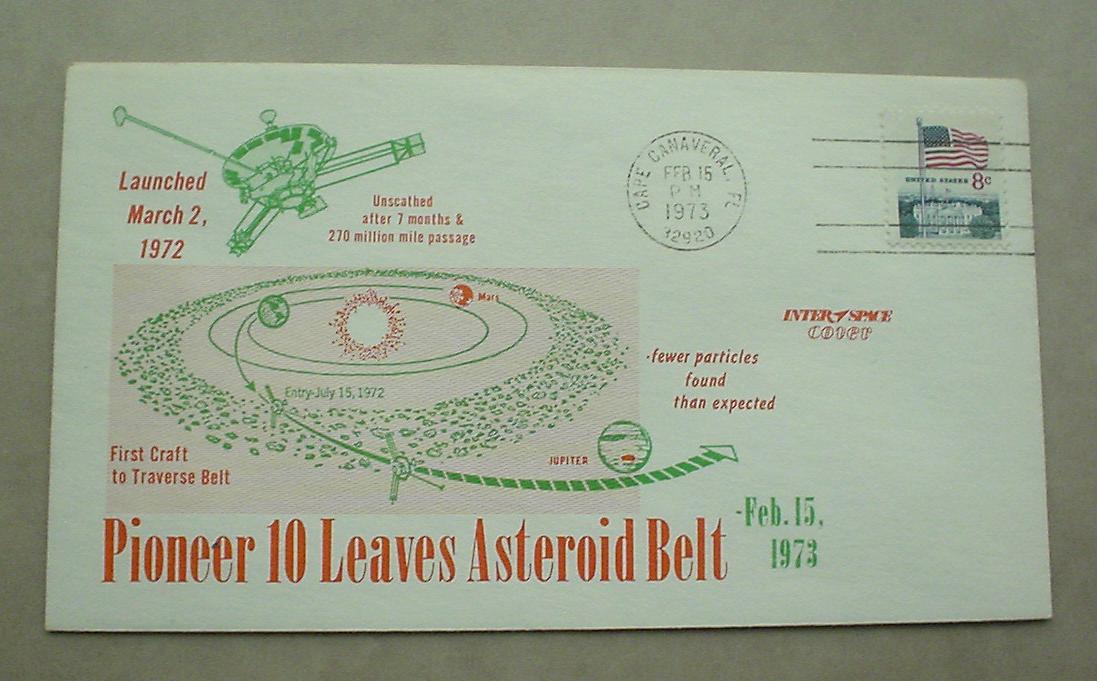
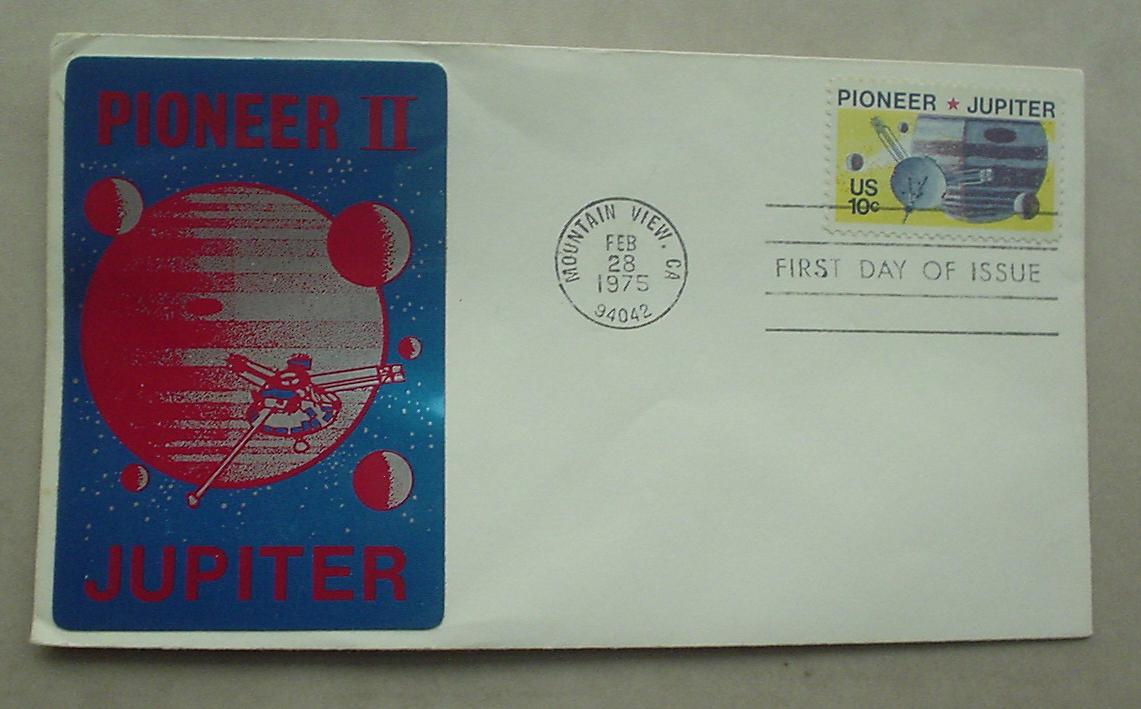
Our Toolbox
Our search algorithm for designing space trajectories is implemented
in Java. It is based on three C++ algorithms called via JNI:
* The new Lambert problem solver by Dario Izzo
described
here,
implemented as part of the PyKEP C++
library.
Here is the
source code.
This algorithm performs significantly faster than any alternative we tested.
We also use the
Taylor propagator
for the continuous thrust conversion.
* CMA-ES by Nikolaus Hansen
CMA-ES is used for continuous thrust conversion and the global
optimization of trajectories approximated by Lambert transfers
after search.
We use the active
CMA variant
with Hansen's mirrored sampling.
We developed our CMA-ES C++ code from our contribution to
Apache Commons Math.
* BOBYQA by M.J.D. Powell
BOBYQA
is used for local optimization of trajectory legs during search.
Here, we use the code from the
dlib C++ Library.
As a starting point for our development we used the
OREKIT library
which is currently mainly used for verification purposes.
* Blogspot
More technical stuff can be found at Dietmar's new
Scientific Computation Blog.
Outlook and Dreams
* Our Missions in Reality
It is our dream that one day an agency will really
fly one of our trajectories; for instance a
state agency or a private company (asteroid miners?!).
* Missions for Directed Panspermia
Maybe, life came to our solar system and to earth via
directed panspermia. I am looking for the design of
10,000-year missions who bring (elementary) terrestrial life
to other stars and exo-planets.
See also my website on
Directed Panspermia and Titius-Bode Law
* PhD Studies at Jena University
At Jena University I lead a group in Discrete Optimization
and Applied Mathematics. For smart young people with
algorithmic background and creativity, there are PhD
positions available. Feel free to apply.
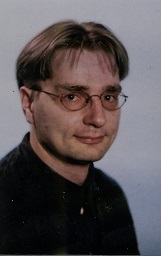
Dr. Dietmar Wolz
Dietmar Wolz holds a PhD in Theoretical Computer Science.
In the years 2000-2002 he programmed very nice and
fast algorithmic procedures for solving the
"Eternity Puzzle". On a standard single core PC, his program
constructed several new Eternity solutions,
one by one every five days or so - not bad for a problem
called Eternity. Wolz was also successful in other discrete
optimization problems, for instance in the design of
cellular automata with extreme properties.
Back to the main site - Zurück zur Hauptseite




